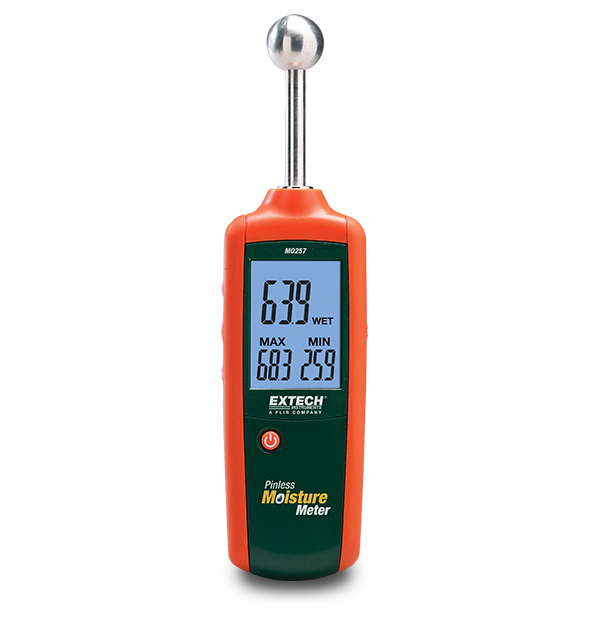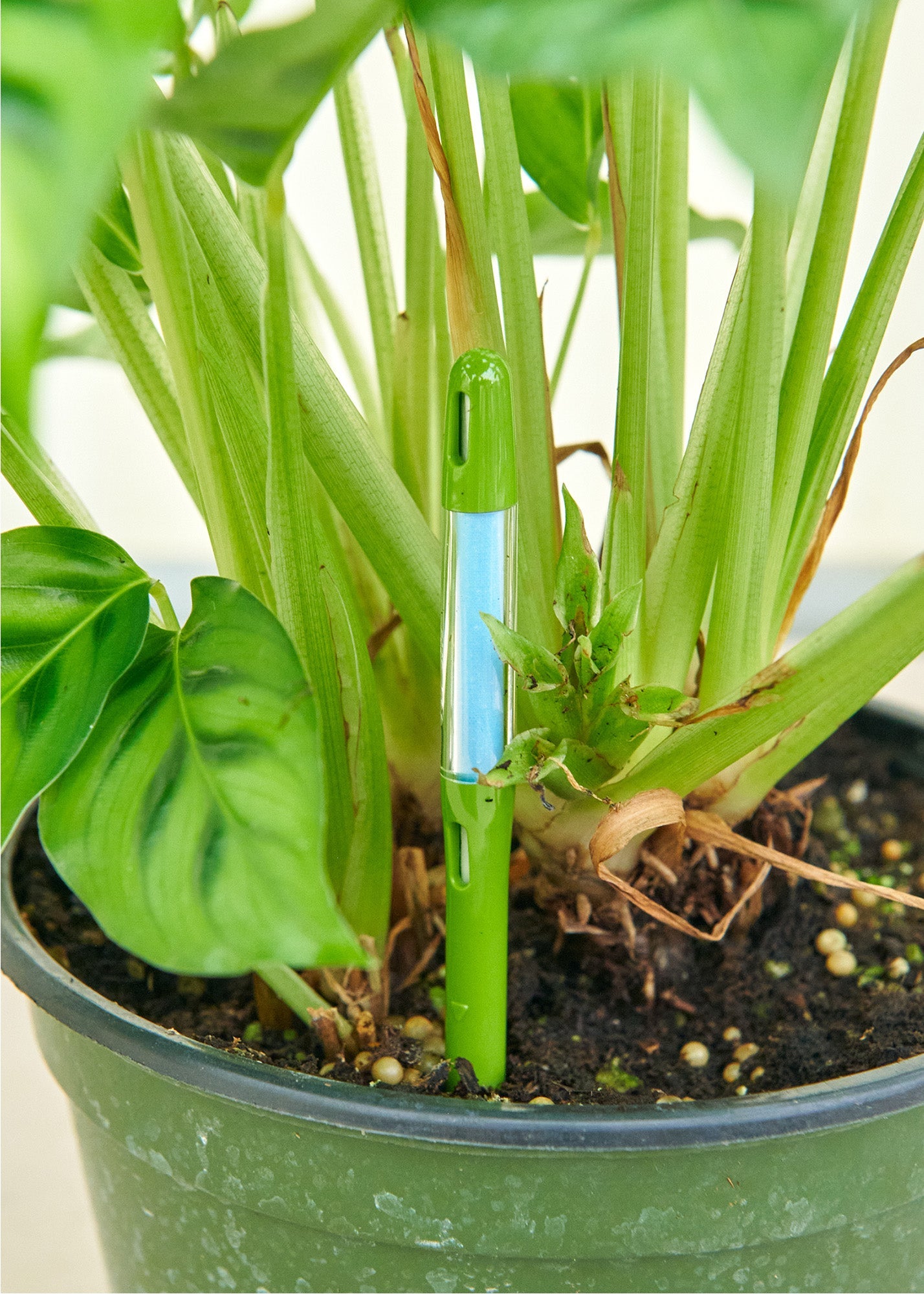Look Into the World of Wetness Meters: Everything You Need to Know
In the world of moisture meters lies a world of accuracy and functionality that often goes unnoticed. These devices, while relatively simple, hold a wealth of details that can dramatically affect numerous sectors and applications. Understanding how moisture meters operate, the different kinds available, and their diverse usages can drop light on their value in making certain quality and effectiveness. By checking out the ins and outs of wetness meters, one can uncover a beneficial device that transcends plain dimension, offering insights that can make a considerable difference in numerous fields.
How Wetness Meters Job
Wetness meters run by measuring the electric conductivity or capacitance of materials to figure out the wetness content existing - Moisture Meter. These meters are indispensable tools throughout numerous sectors, including construction, farming, and woodworking. By using various techniques such as pin-type or pinless technology, wetness meters give exact analyses that assist professionals make educated decisions
Pin-type dampness meters work by placing the sharp pins into the material being tested. On the various other hand, pinless dampness meters utilize electro-magnetic signals to check a bigger area without triggering any type of damages to the product's surface area.
No matter of the approach used, wetness meters play a critical function in avoiding concerns such as mold growth, architectural damages, or product flaws brought on by excess wetness. Comprehending exactly how these meters job is vital for making sure the quality and integrity of materials in numerous applications.
Kinds of Dampness Meters
Offered the vital role wetness meters play in various sectors, it is vital to understand the various types readily available to experts for accurately evaluating wetness degrees. There are primarily two main kinds of wetness meters: pinless and pin-type moisture meters.
Pin-type dampness meters utilize 2 pins that are put right into the product being evaluated to determine the electric resistance in between them. This method is typically made use of for wood, drywall, and other building materials. Pin-type meters give specific readings at details midsts, making them optimal for determining dampness gradients.
On the various other hand, pinless dampness meters make use of electro-magnetic sensor plates to scan a larger area of the material without triggering any type of damage. This kind is ideal for quickly scanning huge locations and is generally used for floor covering, walls, and ceilings. Pinless meters are practical for taking analyses on completed surfaces without leaving any noticeable marks.
Both sorts of moisture meters have their advantages and are selected based on the certain needs of the job at hand. Recognizing the differences between these types is critical for specialists to make precise wetness evaluations.
Applications Across Industries
With varied functionalities, wetness meters discover widespread application across different industries, aiding professionals in making sure optimum conditions for frameworks and products. In the farming industry, wetness click here for more meters are important for establishing the dampness web content in grains, seeds, and hay, making certain quality assurance and protecting against mold growth. Building professionals depend on moisture meters to evaluate the wetness levels in building materials like drywall, wood, and concrete, which is critical for keeping architectural stability and stopping problems like rot or mold and look these up mildew. The flooring industry uses wetness meters to gauge the wetness material in subfloors before installing different flooring, avoiding expensive damages due to excess moisture. Furthermore, in the food sector, moisture meters are utilized to keep track of and regulate moisture degrees in items such as grains, nuts, and dried fruits to keep quality and top quality. Furthermore, wetness meters play an important role in the restoration and damages evaluation sector by helping specialists deal with and recognize water damages in buildings quickly. Throughout these diverse markets, dampness meters are vital tools for making sure the quality, security, and longevity of various materials and items.
Tips for Using Wetness Meters
When measuring the moisture material in numerous products,Make use of the wetness meter's calibration settings to make certain exact readings. Calibration is crucial for the proper functioning of a wetness meter. Prior to each use, it is advisable to inspect and readjust the calibration setups according to the particular material being checked. Furthermore, see to it the meter is readied to the right moisture array for the product you are gauging to get one of the most exact outcomes.

When utilizing a pin-type wetness meter, place the pins to the proper deepness advised for the material being examined. This guarantees that the moisture readings are taken from the correct deepness within the material, providing a much more accurate representation of its wetness material. For pinless moisture meters, keep in mind to maintain proper call with the product's surface to get dependable readings.

Frequently inspect and replace the batteries in your moisture meter to stop imprecise analyses as a result of low power. Shop the meter in a completely dry and safe area when not in use to extend its life-span and preserve its accuracy. By adhering to these suggestions, you can maximize the performance of your wetness meter and get precise dampness material measurements across different materials.

Upkeep and Calibration
To ensure the accuracy of wetness content dimensions, routine maintenance and calibration of the dampness meter are crucial actions in its correct functioning. Calibration adjusts the wetness meter to make sure this contact form that it offers consistent and trusted outcomes.
Calibration needs to be done periodically, especially if the moisture meter is used frequently or in vital applications where precise measurements are needed. Several moisture meters come with calibration devices or can be calibrated by professional solutions - Moisture Meter. It is recommended to maintain a log of calibration dates and results to track the performance of the moisture meter with time. By calibrating the dampness and maintaining meter routinely, customers can rely on the precision of the moisture content measurements obtained.
Conclusion
To conclude, dampness meters play an important function in different sectors by properly determining the dampness web content of materials. Recognizing exactly how these devices work, the different kinds available, and proper upkeep and calibration are essential for obtaining reliable results. Whether in farming, production, or building, using dampness meters aids make sure quality control and efficiency in processes.
Building professionals count on wetness meters to analyze the moisture degrees in structure materials like concrete, drywall, and timber, which is crucial for maintaining structural stability and protecting against issues like rot or mold and mildew. The flooring sector makes use of moisture meters to determine the dampness web content in subfloors prior to mounting different floor coverings, stopping costly damages due to excess moisture.Use the dampness meter's calibration settings to guarantee exact readings when gauging the wetness web content in different materials. By following these tips, you can take full advantage of the performance of your moisture meter and get specific wetness content dimensions across different materials.
In final thought, wetness meters play an essential function in numerous industries by accurately determining the wetness material of products.